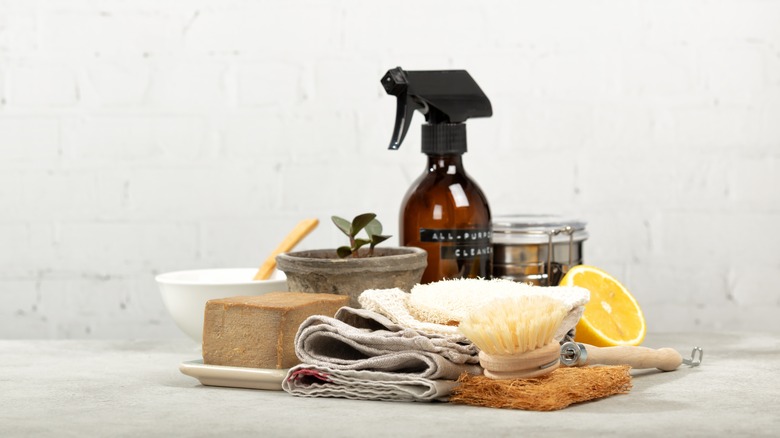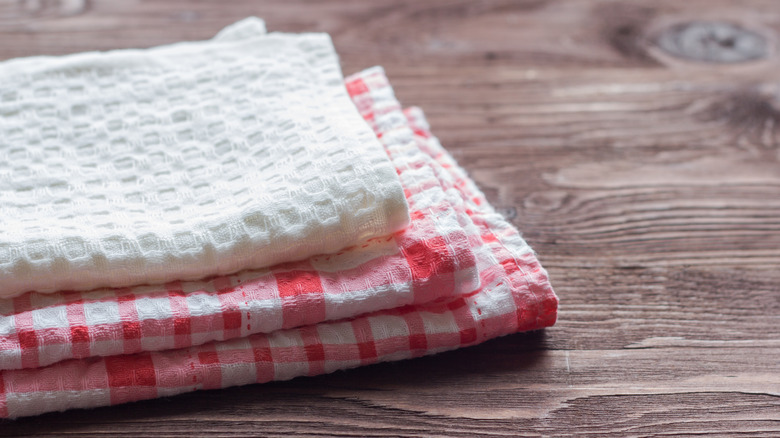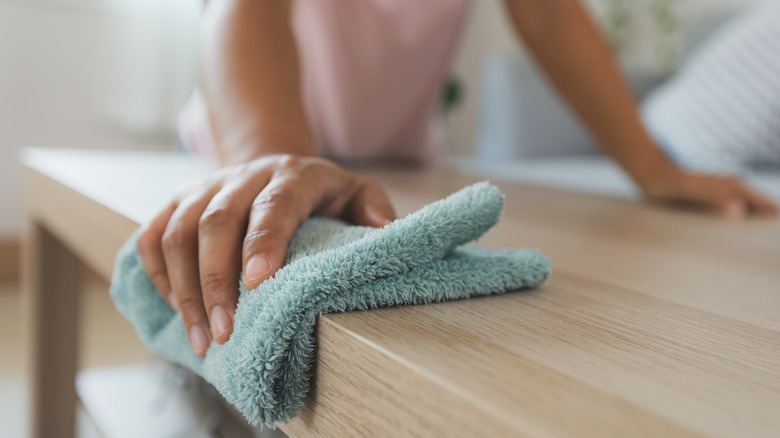For Peak Kitchen Safety, Color Code Your Towels
The basis of every good kitchen, from your average home kitchen to restaurants, is practicing quality food safety. After all, when you're handling food meant for yourself or for others, preparing it in a clean and hygienic environment is paramount before you even begin the dish itself. The Centers for Disease Control and Prevention tells us that an incredible 48 million people get sick from food-related illnesses, such as food poisoning, each year, with 3,000 of those cases dying from foodborne diseases.
Fortunately, making a safe kitchen doesn't necessarily require you to do a full deep scrub of everything from your oven to your fridge. In fact, most steps towards a clean and hygienic kitchen are very simple, common sense things that you usually do without a second thought. These include not leaving food out on the counter, refrigerating raw meat, washing plates and utensils under hot water, and throwing away expired items. Just by doing these simple, everyday actions, you already make your kitchen a much safer place to cook and eat.
But there may be one kitchen item that you may haven't given a second thought to, even when you're using it to clean up: the kitchen towel. A 2018 report from Today tells us that kitchen towels may be hidden hotspots for germs and other bacteria gathered up from around your kitchen and could spread said germs from person to person when used. How can you use your handy kitchen towel and still keep a clean kitchen?
Learn to color-code your kitchen towels
Depending on the size of your kitchen, you may have more than one hand towel. You may have one hanging over the oven door, one in the drawer under the utensils, and one that you just keep around for general cleaning purposes. The following idea does call for a lot of kitchen towels, but it also places a bit more focus on categorizing them.
As America's Test Kitchen explains, it's a good idea to color-code your kitchen towels. You could, for example, have a red kitchen towel designated for drying dishes and utensils after you're done cooking, a white dish towel can be used to clean surfaces, and that one novelty dish towel you're pretty sure your aunt gave you can be used to exclusively dry your hands. Having a kitchen towel for one purpose, rather than one kitchen towel for all kitchen-based purposes, helps to reduce the risk of cross-contamination. You wouldn't be drying your hands with the towel you just used to clean up spilled cooking oil, just as you wouldn't be using the towel you used to clean the stovetop to clean the dishes.
The idea of color-coding certain towels isn't just a practice that's confined to the kitchen. Some companies, such as Monarch Brands, encourage the use of color-coding towels in the fields of medical care, hospice, and education, as to help prevent cross-contamination in the young or elderly.
When should you throw away your kitchen towels?
Although color-coding your kitchen towels is a great way to prevent cross-contamination, you also have to know when it's time to toss your kitchen towels out? But what are the definitive signs that your towel has become more of a rag than a handy kitchen tool?
According to Brandi Winch of "Housemaid Cleaning Service, LLC" (via Martha Stewart), when you should throw your kitchen towels out depends on how much you use them. If you use your towels constantly to clean up harsh spills, you may find yourself throwing them out more than you would a towel that you use simply to wash your hands with. Clear signs you should throw your kitchen towel out include noticeable large tears in the fibers and a noticeable smell that seems to stick no matter how many times you try and wash it.
Reader's Digest tells us that a dish towel can actually be one of the dirtiest things in your home, considering how much grime, grease, and food it collects as you scrub with it. It's recommended to wash the towels every so often, collecting your used towels in a wastebasket and then washing them as a single load. If washing them doesn't remove any stains or seems to damage them even more, it's time to toss them in the recycle bin.


